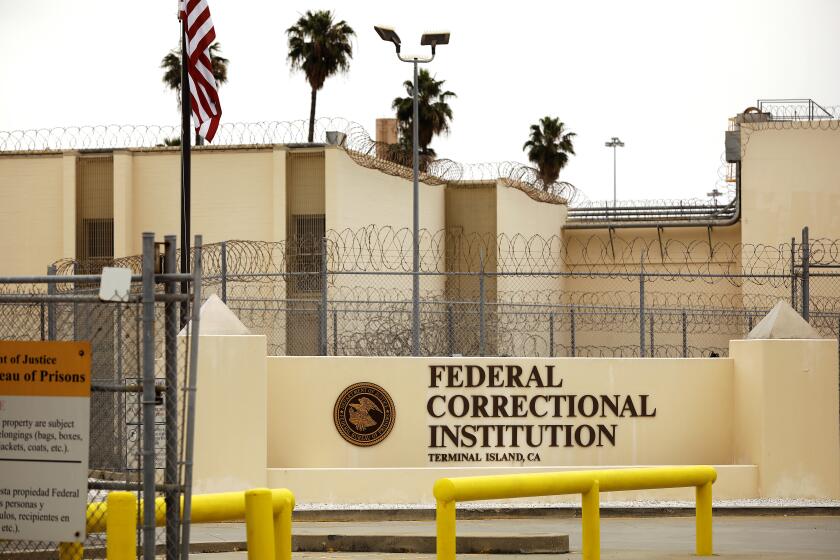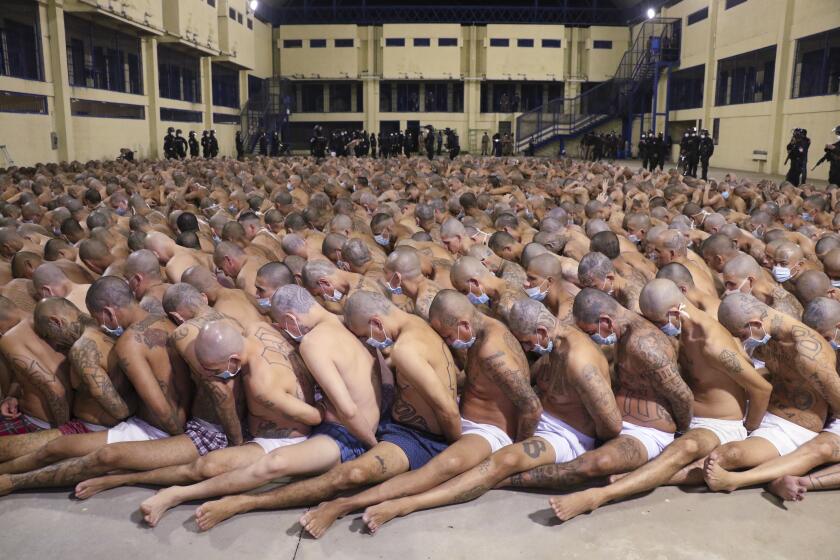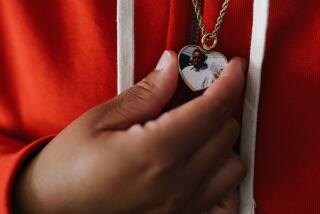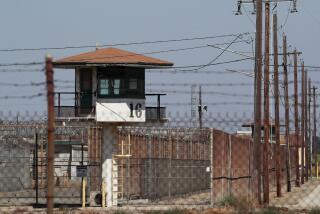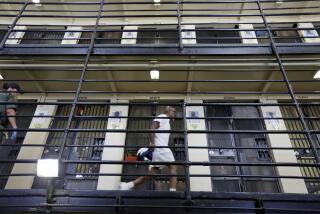More than 70% of federal prison inmates tested for coronavirus are infected
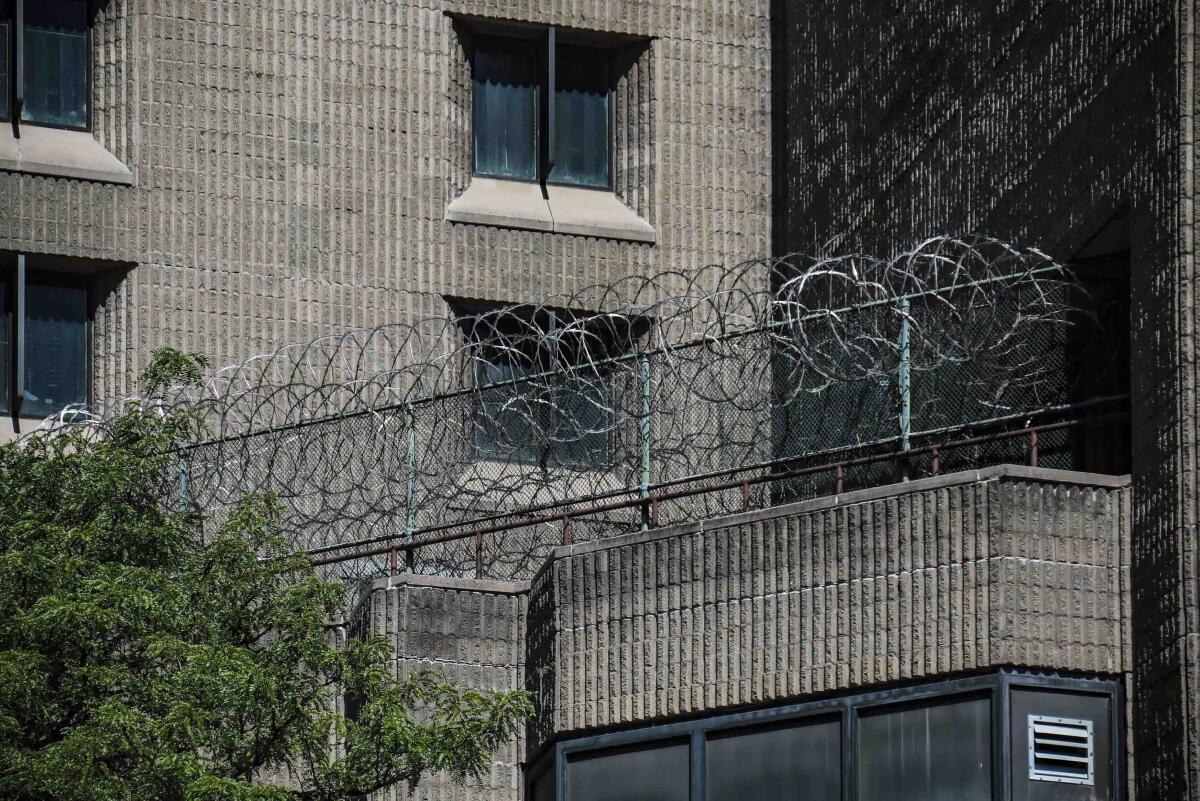
WASHINGTON — Michael Fleming never got to say goodbye to his father. He didn’t know his dad was fading away on a ventilator, diagnosed with coronavirus at the FCI Terminal Island federal prison in Los Angeles, where he was serving time for a drug charge.
His father, also named Michael, died April 19. At least half the population there has tested positive, the largest known hot spot in the federal prison system. But the first word the family received of the father’s illness was the day he died, from a prison chaplain asking if the body should be cremated and where the ashes should be sent.
“They just left us all in the dark,” Fleming said. “We had to find out from the news what the actual cause of death was. It was kind of screwed up.”
As of Tuesday, 443 of the prison’s 1,055 inmates have the coronavirus, along with 10 staff members. Two inmates have died from COVID-19.
The response from the federal Bureau of Prisons to the growing coronavirus crisis in prisons has raised alarm among advocates and lawmakers about whether the agency is doing enough to ensure the safety of the nearly 150,000 inmates serving time in federal facilities.
Although officials say infection and death rates inside prisons are lower compared with outside, new figures provided by the Bureau of Prisons show that out of 2,700 tests system-wide, nearly 2,000 have come back positive — more than 70%. The results strongly suggest there are far more COVID-19 cases left uncovered.
At the same time, the Bureau of Prisons’ communication policies are leaving families in the dark about their loved ones’ potentially life-threatening conditions.
The 59-year-old Fleming had been serving a 20-year sentence on a drug conspiracy charge. The Bureau of Prisons never notified Fleming’s family that he was taken to a hospital or when his condition declined.
“Not having the opportunity to say goodbye — that would’ve been invaluable,” the younger Fleming said. “We will never have that chance.”
Under Bureau of Prisons policy, the agency is supposed to “promptly” notify the family of inmates who have serious illnesses. But the agency, which confirmed that the family wasn’t initially notified, has “discretion when making notifications,” according to a spokeswoman.
As coronavirus spreads, California prisons plan to release 3,500 inmates early.
Prisons officials say they are doing the best they can under dire circumstances and following guidelines set by the Centers for Disease Control and Prevention.
“We are doing the right things to manage our population and to keep them as safe as possible at this time when we can’t provide that assurance to our average American free public that everyone is safe and secure right now with this pandemic,” said Kathy Hawk Sawyer, a senior advisor at the Bureau of Prisons, who previously ran the agency twice.
As of Wednesday, 31 inmates, including Fleming, had died of the coronavirus at federal correctional facilities since late March. About 600 have recovered.
Prisons officials have daily calls with CDC officials, and CDC teams have visited several correctional facilities. As part of the plan to slow the spread of the coronavirus, officials have limited inmate movement, set up tents to increase bed space, isolated inmates at some prisons and identified others for possible home confinement.
The Justice Department obtained 20 ventilators for use at hospitals housing federal prisoners, said Dr. Jeffrey Allen, the bureau’s medical director.
In the last week, the Bureau of Prisons has obtained more than 5,000 test kits and now has 20 rapid testing machines deployed at hot spot prisons to increase testing numbers, Allen said.
He insisted that testing was in line with current CDC guidance and that officials were working daily to discover new strategies to slow the spread of the virus.
“A lot is yet unknown about how to limit its transmission in a correctional environment, and that’s why we’re collaborating with the CDC to try to identify that sort of data that can inform our management strategies going forward,” he said.
The spreading specter of the coronavirus is shaking Latin America’s notoriously overcrowded, unruly prisons.
But at the Metropolitan Detention Center, a federal lockup in New York City housing 1,700 inmates, there were only nine nasal swab test kits late last month, according to a lawsuit filed on behalf of hundreds of inmates there. Just one inmate has been confirmed with the coronavirus there, according to Bureau of Prisons statistics.
Deirdre D. von Dornum, attorney-in-charge of the Federal Defenders of New York in Brooklyn, said, “They are not testing anyone.”
At the Metropolitan Correctional Center, the New York City jail where disgraced mogul Jeffrey Epstein killed himself, inmate Guillermo Zegarra-Martinez told his attorney in an email that his cellmate tested positive for the coronavirus and was put in isolation for more than two weeks.
But Zegarra-Martinez was not tested even though he was shaking in his cell with a fever at night and experiencing pain throughout his body the week before his cellmate was taken out and the week after, he wrote.
The sick inmate was taken out of the cell only “because he was coughing on the face of the guy” who took his temperature, Zegarra-Martinez said, according to his lawyer, Sabrina Shroff.
Advocates and even prison guards have been calling for reforms to head off outbreaks in a prison system plagued for years by violence, misconduct and staffing shortages. Nearly 350 staff members have tested positive.
Staff are sent around the country to pick up shifts, and union officials say the shortages are still so severe that officers are sometimes working 24 hours straight. At a prison in Elkton, Ohio, where seven inmates have died, the governor called in the National Guard to help supplement medical staff.
Officers worry that the protective equipment they’ve been given isn’t adequate to protect them from daily contact with inmates, especially at facilities where dozens have tested positive.
But Hawk Sawyer said the Bureau of Prisons is prepared with ample personal protective equipment and supplies, including soap and disinfectant.
“We are creating and making the masks for the staff, as well as the shields and hand sanitizer and all kinds of things,” she said.
More to Read
Sign up for Essential California
The most important California stories and recommendations in your inbox every morning.
You may occasionally receive promotional content from the Los Angeles Times.
